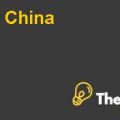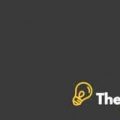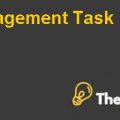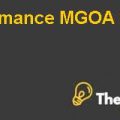Keurig: From David to Goliath: The Challenge of Gaining and Maintaining Marketplace Leadership 1 Case Solution
- Which one of the five generic competitive strategies most closely approximates the competitive approach that Keurig is employing?
The porter Five Generic strategies are the strategies that the organization uses in order to maintain the competitive edge in the market. These strategies focus on particular components of the organization’s value chain and thus frames a set of strategies that allows the organization to maintain the competitive edge through definite value proposition.
These Five strategies includes:
- Low Cost Leadership
- Differentiation
- Cost Focus
- Differentiation Focus
- Best Cost Provider Strategy
Hence by analyzing the overall strategies, it is suggested that Keurig should use the differentiation strategy in the market to create the value for the customers. By doing so, it offers the coffee shots with the plastic cups covered with aluminum lid reducing the hassle of making a coffee. In addition, It offers supper convenience and fast service while making coffee, leading to low time consumption and cleaning processes, creating a point of differentiation in the mark (D’Aveni, 2007)
Such technology also allows it to maintain the distinguished value proposition and also enables it to continually create the value for the end customers, thus it can be said that the company utilizes the differentiation strategy to create the standpoint and clear the positioning in the market, leading it to attract the market giants such as Starbucks and Dunkin Donut.
- What chief differences do you see between Keurig's strategy and the strategy being employed at Mr. Coffee?
The major difference that can be seen between Keurig and Mr Coffee is the pursuance of the competitive strategy. Keurig uses the differentiation strategy to create the value in the market with clear distinction and value proposition, leading to the development of clear market position the mind of the customer.
It incorporates the latest technology and innovation in process such as the development of the Pod cups made out of plastic and the aluminum lid that allows the use to make the coffee by putting the cup under the pod without removing the lid, offering a rich garnet taste and quality. In addition, it spends great amount of budget on the marketing to make the product more viable and visible in the market leading to the development of strong brand image in the market (Brown, 2016).
In addition to this, Keurig also focuses on the maintenance of the value chain components such as the Human Resources and Operational efficiency (internal logistics) that allows it to manage the supplier relationship and improve the quality of the product in the market. Since it has been mentioned that the company consistently ensures the quality of the product by developing the long term relationship with the selected suppliers, which helps it to offer the uniform services and quality of product, leading to the development of the competitive edge in the market.
On the other hand, Mr Coffee pursues the cost leadership strategy in the market. By doing is, it offers the low quality or mid quality product to the customers as compared to Keurig in affordable rates, gaining the profit through the volume of sales. Though it has been noticed that the company has invested in the value chain by enhancing the technology to improve the product quality and feature, it differs from Keurig in pursuing the organizational strategy. In addition, the company targets the limited market in the US in comparison to Keurig that caters the different US states through online marketing and strong brand awareness.
Alternative Generation
Alternative: 1 the company should integrate the supply chain backward.
Pros:
- This will allow the company to control the quality of the product in the market that will help in maintaining the quality of the product.
- In addition, this will allow the company to reduce the dependence on the external suppliers, increasing the bargaining power and also trending the risk of being imitated by the other competitors through the Breach of technology.
Cons:
- This will increases the cost of production by reducing the profits in the short term.
- This will also increase the workload over the employees to manage the backend operation leading to the reduction in skill specialization.
Alternative: 2- The company should create alliance with the third party to offer the technological support so to innovate the production on continual basis.
Pros:
- This will allow the company to maintain its competitive edge in the market by continuously enhancing its product’s feature.
- This will save cost for the company, as changing the technology on frequent basis would incur additional cost, making the operations complex and hard to be maintained due to the cash scarcity.
Cons:
- This may not sustain the technological edge of the company in the market, since there are chances that the third party may breach the contract, which leads for the company to incur losses.
- In addition, this may also create dependence of the company on the third party, diluting the ownership and control and thus creating the conflict in the organizations.
Decision Criteria
| Factors | Alternative:1 | Alternative:2 |
| Competitive Edge | 2 | 1 |
| Technological Support | 1.5 | 2 |
| Profitability | 1.5 | 2 |
| Sales | 2 | 2 |
| Supplier Dependence | 2 | 1 |
| Value Proposition | 2 | 1 |
| Total | 11 | 9 |
- Describe one (1) recommendation you would make to strengthen the company's growth and profitability.
Recommendation
By analyzing the overall situation and the case facts, iota is recommended that the company should pursue the Alternative 1 which is; pursuing the backward integration. This will allow the company to secure its technology from imitation, allowing it to maintain the competitive edge and ultimately resulting in the increase of the sales in the market.
In addition, this will also allow the company to maintain its quality in the market, enabling it offer the uniform product services. Moreover, integrating the operation will reduce the company’s dependence on the suppliers, enabling the organization to manage and maintain the supply demand effectively. Lastly, it will keep the company from losing its technological competitive edge in the market, since the imitation can become difficult and complicated if the organization maintains the operations itself, though such option doesn’t guarantee the imitation security, however, it may reduce the probability and frequency of the technology being imitated (Beer, 2000).












